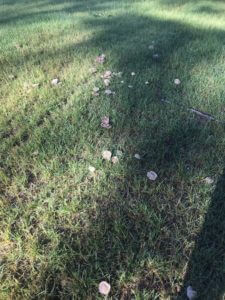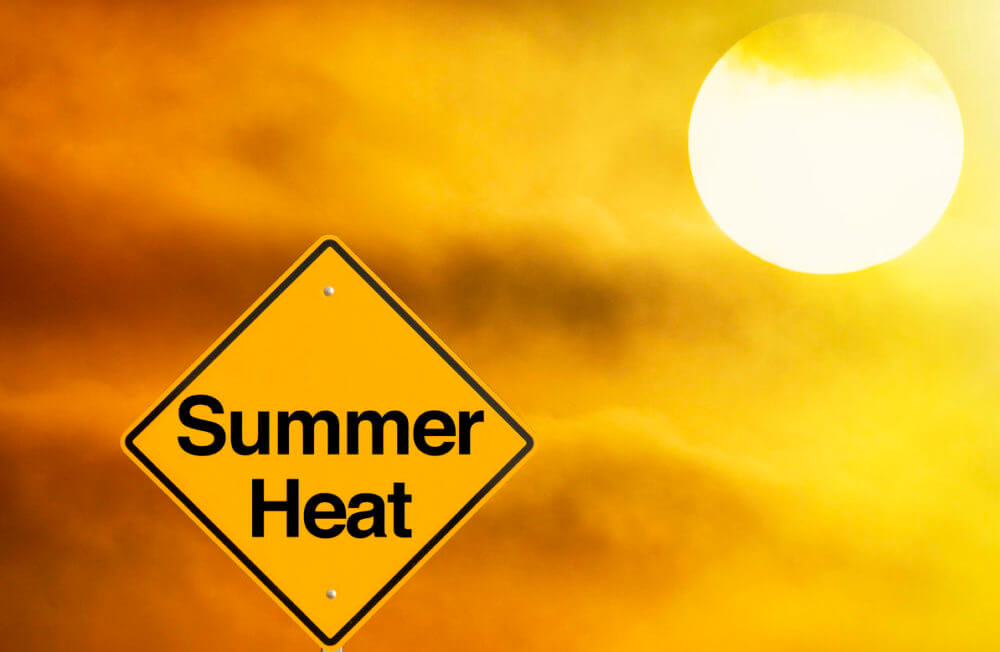No Mowing
No one should be mowing their lawn for the next week. The damage that would be inflicted on the grass would not be worth the visual gain. Any equipment used on a lawn when the air temperature is above 85-90° will surely leave wheel marks in addition to massive moisture loss from the cut surface or the leaf blade. This will result in immediate browning, lasting weeks or months without corrective irrigation and cooler temperatures. For more mowing tips visit: https://www.chippersinc.com/blog/mowing-more-important-than-you-think//

Mushrooms
Lawns will experience widespread mushroom outbreaks due to high moisture and humidity combined with excessive night and day temperatures. It’s a virtual fungal petri-dish below and above ground! This photograph shows mushrooms that popped up overnight. No control measures are needed and they do not impact the grass, unlike disease issues that are described below.
Diseases and Irrigation
I highly discourage irrigation during the late afternoon, early evening or overnight to minimize brown patch, pythium, fusarium and red thread diseases. Watering should be done in the early-to-late morning. For more watering tips visit: https://www.chippersinc.com/blog/nh-is-abnormally-dry-importance-of-watering-your-lawn/
Brown Patch
With nighttime temperatures expected to remain in the high 60°s – all wet lawns are at high risk for brown patch. This is a fast acting, lethal, turf thinning/damaging summer disease. Overly irrigated lawns or those with compromised air circulation are at highest risk. Damage appears as smoky halos and a general thinning of the turf in patches with water-soaked leaves visible in the morning.
Brown patch can hit and transform (a nice way of saying ‘damage’) a lawn overnight. A preventative fungicide spray is the best action. Once the damage is done, it’s done, although a curative spray can help clean up the remaining pathogen fungus in case this hot weather continues.
Pythium, Fusarium and Red Thread
Newly seeded lawns are most susceptible to pythium and fusarium, causing the grass to rot and collapse, giving the plant a visible ‘water-soaked’ appearance in the morning. While red thread is aesthetically unpleasant, it is not normally a damaging disease. A preventative fungicide is best for preventing pythium and fusarium while red thread can be treated after an outbreak.


